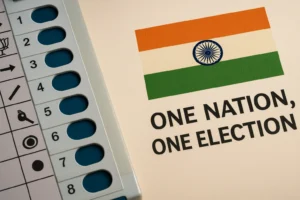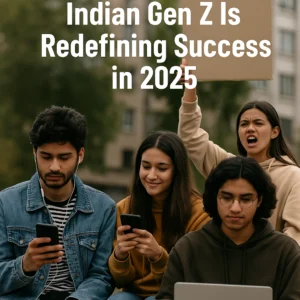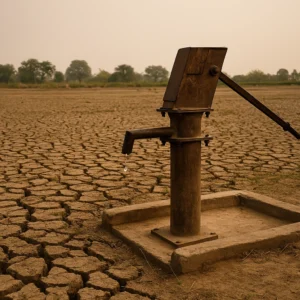7 Reasons Why India’s Water Crisis Is Far Worse Than You Think!

A rusted hand pump over parched earth reflects the severity of the India water crisis affecting both rural and urban regions.
When Nirmala Devi’s daughter fainted while standing in line for water in her village outside Jhansi, she didn’t rush her to the clinic. She handed her a steel cup instead. “Pehle paani,” she said softly. First, water. Then we’ll see.
Her words hang heavy over a truth many urban Indians haven’t fully grasped yet: the India water crisis is not a distant warning—it’s already here. And it’s not just about parched fields or summer shortages. It’s far more dangerous. More political. More human. And far more ignored than it should be.
Table of Contents
1. The Data Hides the Desperation
Sure, we’re told India receives plenty of rainfall. It’s true on paper. But rainfall doesn’t mean accessible water. Over 70% of rainwater drains away due to inadequate storage infrastructure. The rest seeps into polluted rivers or vanishes through cracked pipes and mismanaged urban systems.
In reality, more than 600 million Indians face high to extreme water stress. That’s not a typo. It’s half the country.
Yet, open your favorite news app and chances are you’ll hear more about the latest cricket controversy than the fact that 21 Indian cities could run out of groundwater this decade.
2. It’s Not Just Rural—Cities Are Gasping Too
When Chennai ran out of water in 2019, it was treated as a one-off freak event. But ask anyone in Bengaluru’s new apartment towers or Delhi’s unauthorized colonies today—water scarcity is routine.
Tankers have become the real landlords in Indian cities. They come at dawn, demand cash, and vanish. Some are legal. Many are not. And no one really knows where they’re sourcing their water. Villages around Hyderabad have seen their local wells go dry—because private tankers are siphoning water to gated communities 30 kilometers away.
3. We’re Growing the Wrong Crops in the Wrong Places
India grows rice and sugarcane—both thirsty crops—on over 40% of its agricultural land. Ironically, much of this happens in drought-prone states like Maharashtra and Punjab. Why? Because of subsidies and political inertia.
We’re effectively pumping billions of litres of water into crops that give us far less food per drop than alternatives. Farmers aren’t to blame; policy is. And without a shift toward sustainable agriculture, the India water crisis will deepen faster than any rainfall can fix.
4. Climate Change Isn’t the Future—It’s Now
Floods in Assam. Droughts in Karnataka. Glacial lakes bursting in Himachal. The climate isn’t whispering warnings anymore—it’s shouting.
Rainfall patterns have become erratic. When it rains, it pours. But that deluge often causes floods and landslides, not relief. Meanwhile, groundwater tables refuse to bounce back. Climate instability is already turning marginal farmers into climate refugees, especially in states like Bihar and Odisha.
And still, water doesn’t get the national attention it deserves. We don’t need more statistics—we need urgency.
you may also read Why India’s Youth Are Turning Away from Government Jobs.
5. Women and Girls Are Paying the Price
In many Indian villages, women walk an average of 2 to 5 kilometers a day just to fetch water. That’s not poetic exaggeration—it’s a daily reality.
Water scarcity impacts girls’ education. It increases the risk of gender-based violence. It leads to chronic back pain, miscarriages, and even deaths from exhaustion. Yet, the India water crisis is often framed in economic terms—not in human ones.
It’s time we called it what it is: a gendered crisis.
6. Water Has Become a Business—and a Black Market
In parts of Uttar Pradesh, water mafias operate openly. In Maharashtra’s drought-hit districts, tanker contracts are linked to local politicians. In Gurgaon, office parks buy water from illegal borewells 60 kilometers away—while nearby villagers depend on muddy ponds.
When something essential becomes scarce, it becomes valuable. And when it becomes valuable, it becomes political. The India water crisis has created a shadow economy that benefits a few and bleeds the rest.
7. It’s Not Too Late—But It Soon Will Be
Here’s the hope: we’ve seen what works. In Alwar, Rajasthan, villagers revived old johads—small catchment ponds—and brought rivers back to life. In Tamil Nadu, rainwater harvesting is mandatory in urban buildings. In Meghalaya, local tribes protect and manage forest streams with sacred rituals.
These aren’t feel-good stories. They’re blueprints. But they need support, scale, and spotlight.
Also read Water Crisis in India: Policy Interventions and Ground Realities.
What Can You Do? (Yes, You.)
You don’t need to live in a village to be part of the solution. Fix leaking taps. Install rainwater harvesting. Educate yourself about local water sources. Support policies that reward sustainable water use—not waste.
And most importantly, talk about it. The India water crisis won’t go away if we ignore it. But it can get better if we act.
Because if there’s one thing we’ve learned from India’s history—it’s that change doesn’t begin in Parliament. It begins in people’s homes, their voices, and sometimes, even in a steel cup handed to a fainting child.




